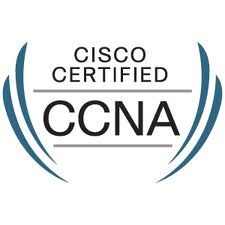IPv6 is 128 bit hexadecimal addressing scheme .
ex- 2001: B82C:1234:0000::DA55:0000:0000:ABCD
To enable IPv6 on a particular interface ,we should give some commands to enable it :
R1(config)#int e 0 :- on the ethernet 0 port
R1(config-if )# ipv6 add 2004:abcd:1234:0001::/64 eui-64 :- particular address which has to be enable
R1(config-if )# ipv6 rip 1 enable
R1(config-if )# no shutdown
now on serial interface 0
R1(config)#int s 0 :- on the serial 0 port
R1(config-if )# ipv6 add 2005:abcd:1234:0002::/64 eui-64 :- particular address which has to be enable
R1(config-if )# ipv6 rip 1 enable
R1(config-if )# no shutdown
now we have to give same commands on Router 2
R2(config)# ipv6 unicast-routing (to enable routing in IPv6 )
R2(config)#int e 0 :- on the ethernet 0 port
R2(config-if )# ipv6 add 2003:abcd:1234:0001::/64 eui-64 :- particular address which has to be enable
R2(config-if )# ipv6 rip 1 enable
R2(config-if )# no shutdown
now on the serial port 0 of another side
R2(config)#int s 0 :- on the serial 0 port
R2(config-if )# ipv6 add 2005:abcd:1234:0002::/64 eui-64 :- particular address which has to be enable
R2(config-if )# no shutdown
R2(config-if )# ipv6 rip 1 enable
R2(config-if )# clock rate 64000 ( clock rate is always givento D.C.E. side )
Some commands to check the interface address : -
R2# sh ipv6 int brief
R2# sh ipv6 int e0
R2# sh ipv6 route
ex- 2001: B82C:1234:0000::DA55:0000:0000:ABCD
To enable IPv6 on a particular interface ,we should give some commands to enable it :
R1(config)#int e 0 :- on the ethernet 0 port
R1(config-if )# ipv6 add 2004:abcd:1234:0001::/64 eui-64 :- particular address which has to be enable
R1(config-if )# ipv6 rip 1 enable
R1(config-if )# no shutdown
now on serial interface 0
R1(config)#int s 0 :- on the serial 0 port
R1(config-if )# ipv6 add 2005:abcd:1234:0002::/64 eui-64 :- particular address which has to be enable
R1(config-if )# ipv6 rip 1 enable
R1(config-if )# no shutdown
now we have to give same commands on Router 2
R2(config)# ipv6 unicast-routing (to enable routing in IPv6 )
R2(config)#int e 0 :- on the ethernet 0 port
R2(config-if )# ipv6 add 2003:abcd:1234:0001::/64 eui-64 :- particular address which has to be enable
R2(config-if )# ipv6 rip 1 enable
R2(config-if )# no shutdown
now on the serial port 0 of another side
R2(config)#int s 0 :- on the serial 0 port
R2(config-if )# ipv6 add 2005:abcd:1234:0002::/64 eui-64 :- particular address which has to be enable
R2(config-if )# no shutdown
R2(config-if )# ipv6 rip 1 enable
R2(config-if )# clock rate 64000 ( clock rate is always givento D.C.E. side )
Some commands to check the interface address : -
R2# sh ipv6 int brief
R2# sh ipv6 int e0
R2# sh ipv6 route

